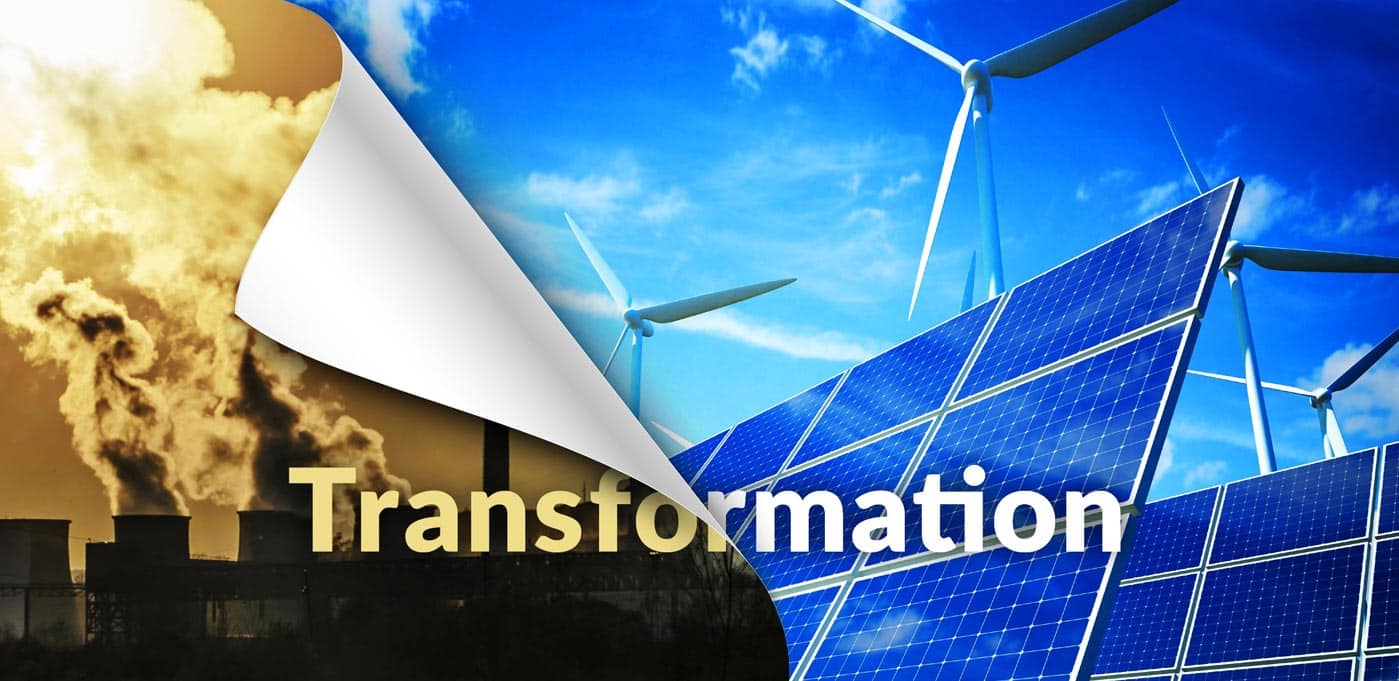The future of the global power industry is not yet determined. Consumers, investors, corporations, and policymakers all are promoting how best to move forward as if there are unlimited pathways to reach the desired future. What is the desired future? What would it look like and how would we recognize it if we ever get there? No one really knows.
While we may not yet see the desired future with total clarity, we can surely connect key data points to see what comes next. And that’s an ideal place to start.
To illustrate how the power industry is transforming for our clean energy future, I’m going to share the following:
- Where we need to focus to confront dramatic changes,
- Compelling facts and figures,
- Challenges and opportunities of transformation,
- Pragmatic solutions to mitigate some risks,
- And how my company, ST Power Services, is doing its part by transforming thermal power plants to generate clean energy and help integrate renewables.
Navigating a Sea Change
It took over a century to develop the existing power system infrastructure. It is critical and indispensable to sustain our way of life. We have grown to expect reliable electricity to maintain our high standards of living, power our devices, and have real-time access to information. We do not know how to go about our lives without electricity.
And yet the growing number of extreme weather events — wildfire, hurricanes, floods, etc. — have become a real threat to reliable supply of electricity. Why?
Because the traditional conventional power systems have been emitting toxic air pollution for decades, causing dire consequences to our climate – global warming, rising oceans, and extreme weather events.
So, to prevent further impact to our climate and to continue enjoying a reliable supply of electricity, we must adopt new and better ways to generate, deliver, and consume electricity. In other words, we must employ clean energy resources, modernize power grids, and efficiently consume energy.
How do we do that?
Quite simply, we must focus on three key areas as we transition to our clean energy future:
- Electricity – Demand, Supply, and Delivery
- Climate – Decarbonize
- Infrastructure – Decentralize and Digitalize
Regional strategies and integrated resource plans (IRP) of energy companies are aiming to achieve net-zero carbon emission by 2050. This will require us to fundamentally transform today’s power systems to decarbonize, decentralize, and digitalize tomorrow’s power systems.
Because:
- Decarbonization involves phasing out fossil fuel generation to eliminate CO2 emissions. It is critical for reducing greenhouse gas emissions to prevent global warming.
- Decentralization involves transforming the traditional centralized markets to point-of-use, location-based markets to minimize the strain on the existing power grids.
- Digitalization involves the use of digital technologies to transform traditional business models, optimize operation and maintenance, and employ data-driven asset management techniques.
We must do all that simultaneously while supplying reliable electricity today, tomorrow, and throughout the transition period. For that, we must operate fossil fuel plants for the foreseeable future as we integrate clean technologies and modernize grid infrastructure.
We at ST Power Services have been working with thermal power generating companies to optimize their O&M strategy and total asset performance. They are under growing pressure to demonstrate flexibility, reliability, and social responsibility to maintain power system stability. In the past 4-years, we have successfully optimized a wide range of gas turbines and steam turbines at simple cycle, combined cycle, and cogeneration plants.
Facts and Figures
How is the industry progressing toward our clean energy future during the COVID-19 pandemic? Here is a quick snapshot:
- Due to the COVID-19 pandemic, global electricity demand has declined by 20% or more in 2020, resulting in a revenue shortfall of 7%.
- Electricity generation from renewables is expected to increase by 5% in 2020 due to its low operating costs and growth in new capacity.
- Coal-fired power generation was struggling well before the pandemic; however, low electricity demand and steady growth in renewables have accelerated its rate of retirement.
- Annual global CO2 emissions are estimated to drop by 8% in 2020, primarily due to the downturn in economic activity.
- Initial analysis shows that during the pandemic reduced electricity demand, improved air quality, and the steady growth of renewables have accelerated the momentum of our transition to clean energy future.
Challenges and Opportunities
Is this sustainable momentum? What are the challenges and opportunities to sustain the current momentum to continue progressing toward our desired future?
- Investment: The power industry must commit significant investment to modernize and digitalize power grids, accelerate the integration of renewables, optimize gas-fired generation, and improve the sustainability and resiliency of electric power system. Duke Energy, for instance, announced at the 2020 ESG Investor Day on October 9, 2020 that it plans to invest as much as $60B to achieve net zero carbon emission by 2050. According to World Energy Outlook 2020, the global power industry transformation will require an estimated 4 – 5 trillion dollars over several decades.
- Business Models: Traditional business models were designed to support vertically integrated centralized energy markets, but they are no longer valid for the evolving decentralized markets. The decentralized markets offer multi-directional energy flow, customer preferences, new market structures – wholesale, capacity, self-generation — in a highly competitive and price-sensitive environment.
Investor Owned Utilities (IOU), for instance, are considering real-time, performance-based rate structures to remain competitive while integrating renewable energy resources. Traditional pricing models do not support such rate structures, especially when wind and solar resources have begun to set the marginal cost of electricity. Therefore, a new pricing model must be designed and implemented in line with new market rules. - Grid Inertia: The power system stability is governed by the grid inertia, which is the energy stored in large generators and motors. When the gas turbines and steam turbines are in operation, they act as buffer against voltage and frequency fluctuation during load swing.
A frequency fluctuation is a function of supply and demand. A voltage fluctuation is caused by excessive power usage or overloading on the power grid. Both fluctuations create power system instability, which causes equipment failure, disruption of the power supply, overheated power lines, and unsafe electric arcs. In extreme cases, system operators reduce load by temporarily disconnecting consumers from the grid to avoid large scale blackouts and to maintain safe network operation.
The evolving power generation mix — higher renewables and lower fossil generation —adversely affects the power system stability because inverter-based renewables — wind, solar, and battery storage — do not act as buffer against load swing.
So, as we remove gas turbines and steam turbines from service, that creates real risk to power system stability. The risk will steadily grow as we increase the share of renewables and decrease the share of fossil fuel generation. What are the pragmatic solutions to mitigate growing risks?
- Repurpose ageing turbine-generator sets: We can repurpose the ageing gas turbines — i.e. GE LMS100, small IGT — to function as synchronous condensers during load swings. GE LMS100 gas turbines, for example, were retrofitted with a synchronous self-shifting (SSS) clutch to function as a synchronous condenser at the Los Angeles Department of Water and Power facility to manage grid frequency fluctuation.
Utilities typically install reactive power-compensating devices — capacitor banks, static VAR compensators — close to power loads to lower the reactive current on transmission line. However, these devices have slow response times. Therefore, with the increasing share of renewables we must install a dynamic VAR compensating system, i.e. synchronous condenser, to respond in real time to power fluctuations.
Holistic Approach
We must overcome technical, financial, and regulatory hurdles to strike a balance between sustaining our way of life and transitioning to clean energy future. The emerging clean-energy technologies are becoming commercially viable and demonstrating great potential to be a reliable source of energy in the future. But for now, thermal power generation will remain a critical source of electricity to rebuild the economy, sustain our way of life, and maintain power system stability throughout the transition period.
ST Power Services employs a unique and innovative approach — Boost, Recharge, Transform, and Surge — to transform thermal power plants. We have the solutions, expertise, and proven track record to optimize a wide range of technologies: Alstom GT Fleet, Siemens GT501D5, GE LM6000, GE 7EA, ABB Vax ST, Emerson Control System, TXP – T3000, Allen Bradley, ABB P13 control system, Generator Protection – REG316, CGCM, and GE GT10.
Reach Out Today
Ready to begin the conversation about your thermal plant transformation?


